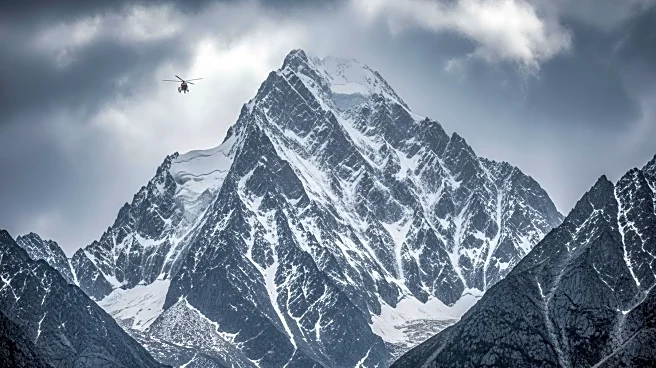What is the story about?
What's Happening?
A severe snowstorm on the Chinese side of Mount Everest stranded approximately 900 hikers, guides, and staff over the weekend. The storm, which hit on Saturday night, left the group isolated at an altitude of over 4,900 meters. By Tuesday, all individuals had been safely rescued, with about 350 hikers descending by noon on Monday. The rescue efforts involved local villagers using oxen and horses to reach the stranded individuals, some of whom suffered from hypothermia. The scenic area in Tibet has been temporarily closed following the incident. The storm coincided with a weeklong holiday in China, during which many people travel domestically and internationally.
Why It's Important?
The incident highlights the risks associated with high-altitude trekking, particularly during adverse weather conditions. The successful rescue operation underscores the importance of coordinated emergency response efforts in remote and challenging environments. The temporary closure of the scenic area may impact local tourism and the economy, as the region is a popular destination for hikers and adventurers. Additionally, the event serves as a reminder of the unpredictable nature of mountain weather, which can pose significant dangers to both amateur and experienced climbers.
What's Next?
The closure of the Mount Everest scenic area in Tibet is expected to remain in place until conditions are deemed safe for visitors. Authorities may implement stricter regulations and safety measures to prevent similar incidents in the future. The event could prompt discussions on improving weather forecasting and emergency preparedness in high-altitude regions. Stakeholders, including local businesses and tourism operators, will likely assess the impact of the closure and explore strategies to mitigate economic losses.
Beyond the Headlines
The incident raises questions about the ethical responsibilities of tour operators and local authorities in ensuring the safety of tourists in extreme environments. It also highlights the cultural significance of Mount Everest as a symbol of adventure and challenge, drawing individuals from around the world despite the inherent risks. The event may lead to increased awareness and education on the dangers of high-altitude trekking, potentially influencing future travel behaviors and safety protocols.
AI Generated Content
Do you find this article useful?
















